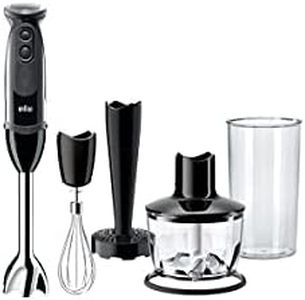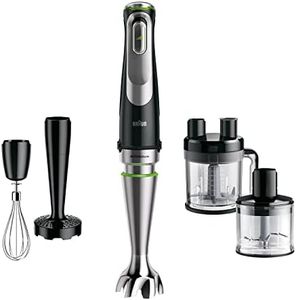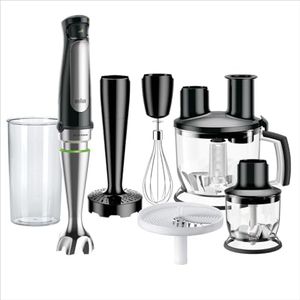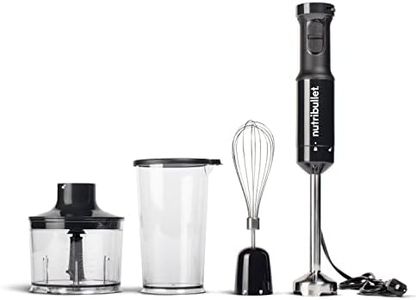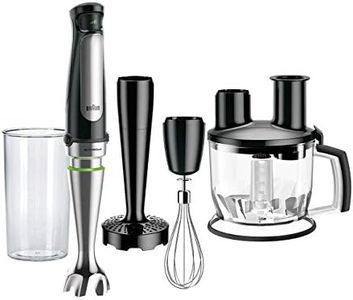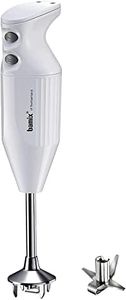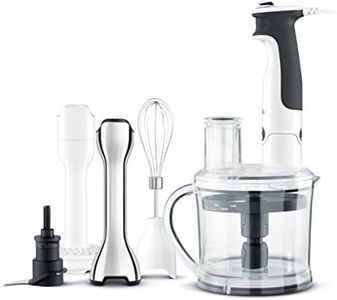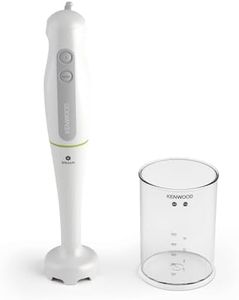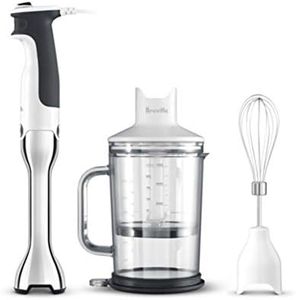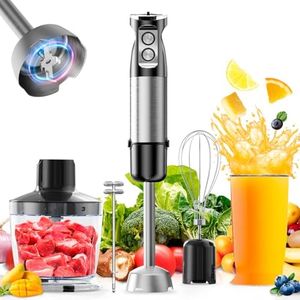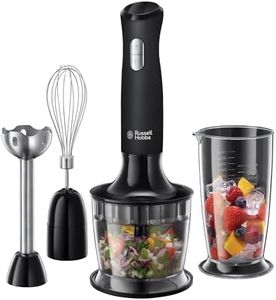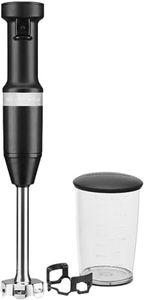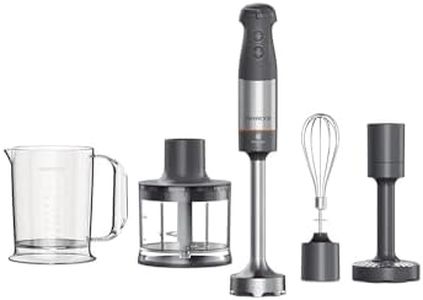We Use CookiesWe use cookies to enhance the security, performance,
functionality and for analytical and promotional activities. By continuing to browse this site you
are agreeing to our privacy policy
10 Best Immersion Blenders
From leading brands and best sellers available on the web.Buying Guide for the Best Immersion Blenders
Choosing the right immersion blender (also known as a hand blender or stick blender) can make tasks like blending, pureeing, and even whipping much easier in your kitchen. The best immersion blender for you will depend on what types of foods you plan to prepare, how often you’ll use it, and how easy you want cleanup and storage to be. By looking closely at a few key specifications, you can ensure you get a tool that’s comfortable to use, efficient for your typical recipes, and durable enough to last.Power (Wattage)Power, measured in watts, tells you how strong the motor is and what kind of blending tasks the immersion blender can handle. Lower wattages (under 200W) tend to work for softer foods and simple tasks like mixing batters or making smoothies with soft fruits, while middle-range wattages (200-400W) are better for small batches of soup, sauces, or purees with some soft vegetables. Higher wattages (over 400W) can handle tougher ingredients like raw vegetables, thick soups, or even crush ice. To choose the right power, think about the hardness of the ingredients you usually work with; if you mostly blend soups or smoothies with soft items, a mid-level power is usually enough. If you often deal with hard foods or want more versatility, go for a higher wattage.
Speed SettingsSpeed settings let you control how fast the blades spin, which affects how finely foods are blended and how much control you have over the texture. Some immersion blenders come with a single speed, which keeps things simple but limits versatility. Others have two speeds—usually low and high—which give you a bit more control. More advanced models offer variable speeds, letting you fine-tune blending. If you like having control over different textures or if you’ll be working with both soft and hard foods, more speed settings are handy. For basic use or if you mostly make the same recipes, fewer speeds usually suffice.
Blade Design and MaterialThe shape and material of the blades determine how effective the blender is at cutting through ingredients and how easy it is to clean. Stainless steel blades are more durable, handle heat well (helpful for blending hot soups), and are less likely to rust, while plastic blades are lighter but can wear down quickly and may not work with hotter mixtures. Blade guards (the housing around the blades) may also affect blending efficiency and protect your pots from scratching. If you value durability and expect to use your blender for hot recipes, choose stainless steel components.
Attachment and AccessoriesSome immersion blenders come with extra attachments, such as whisks, chopper bowls, or beakers, while others include just the basic blending shaft. Attachments can expand what your blender can do, such as chopping herbs, whipping cream, or blending directly in a cup. If you want your immersion blender to multitask, consider what jobs you’d like it to help with in your kitchen, and pick a model with the right attachments. If you prefer simplicity or only plan to blend, focus on just the core blending unit.
Shaft Length and MaterialThe shaft is the part you insert into your pot or bowl, and its length affects how deeply you can blend. Shorter shafts are easy to control and good for small batches or use in cups, while longer shafts are better for deeper pots, such as when pureeing soup directly in the pot. Metal shafts are safer for hot mixtures and more durable, while plastic shafts are lighter but may warp if exposed to heat. Think about the kinds of containers you’ll want to blend in and what temperatures you'll work with to decide on the right shaft length and material.
Ease of CleaningImmersion blenders can be much easier to clean than countertop blenders, but some models make it even simpler. Look for blenders with detachable shafts that can be rinsed under the tap or placed in the dishwasher. Fixed shafts or complicated designs make cleaning more difficult, especially if food gets stuck around the blades. If convenience is a priority, and you’ll use your blender often or with sticky ingredients, a detachable and dishwasher-safe shaft is a big perk.
Grip and ErgonomicsBecause you hold immersion blenders in your hand during use, comfort and grip are important, especially for longer blending tasks or for people with limited hand strength. Models with soft-touch, non-slip grips and well-shaped handles are easier on the hands and safer to hold even when wet. If you think you’ll blend for longer times or have concerns about comfort, pay attention to how the handle feels and whether it suits your hand size and grip strength.
